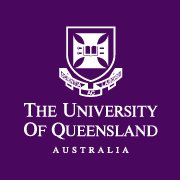Full description
Tissue samples were obtained from whole kidney post-nephrectomy without flushing the blood, fixed in formalin for 24 h and washed with saline for 3 d at 4°C prior to scanning. Samples were scanned at room temperature using a Bruker Biospec 16.4 T MRI at the Centre for Advanced Imaging, The University of Queensland. This scanner is equipped with a Micro2.5 gradient (1.5 T/m at 60 A). Microimaging coils appropriate to the size of the samples were used, these included a 15×30 mm surface coil, a 15 mm and a 10 mm volume coil. Samples were either placed in saline or wrapped with paraffin film to minimise air artefacts. MRI was performed using a 3D T1/T2*-weighted gradient echo (GRE) sequence with repetition time TR = 150 ms, echo time TE = 6.2 ms, flip angle 60°. Typically, the field-of-view was ~2.4×1.2×1.2 cm with the matrix sizes set to produce images at 30 μm 3D isotropic resolutions. The acquisition times were approximately 27 h (number of excitations (NEX) = 4). A sine windowing function was applied to the K-space data prior to the Fourier transform to reduce the noise in the 30 μm images.Issued: 2025
Subjects
Biomedical and Clinical Sciences |
Biomedical Engineering |
Biomedical Imaging |
Clinical Sciences |
Computer Vision and Multimedia Computation |
Engineering |
Information and Computing Sciences |
Image Processing |
Nephrology and Urology |
eng |
User Contributed Tags
Login to tag this record with meaningful keywords to make it easier to discover
Other Information
Research Data Collections
local : UQ:289097
Identifiers
- Local : RDM ID: 10ca5e49-279f-4df6-9ca2-94df008e1e84
- DOI : 10.48610/7DA7765



